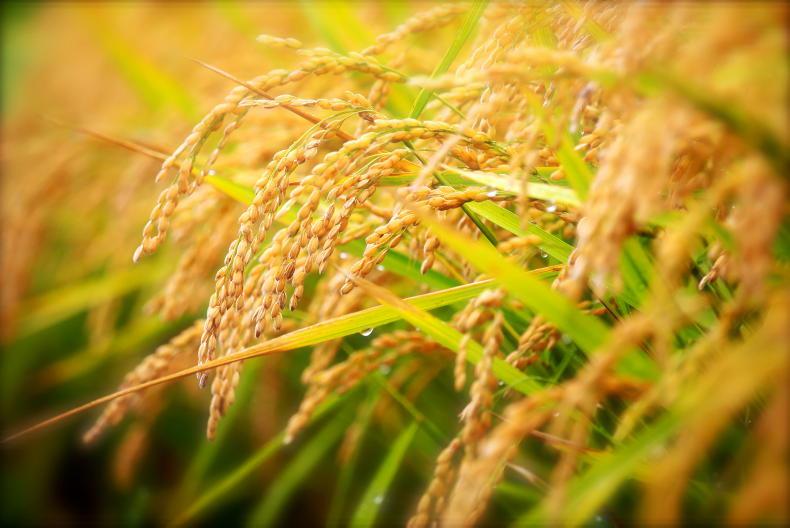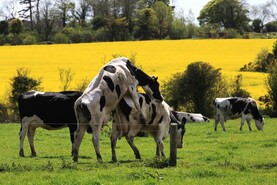For decades now, the major commercial products of genetically modified crops have been traits that reduce the crop’s requirement for different pesticides – Roundup Ready, Liberty Link, insect tolerant, etc.
Other commercial uses have been slow to come to the fore.
I have previously written that China has been very active in the whole area of plant genetics.
It is among the leaders in gene editing capability, but, up to relatively recently, it had rejected GMO technologies.
However, this has changed in its efforts to be more self-sufficient in food and to try to bring up average yield levels for all crops closer to those achieved elsewhere in the world.
Using more hectares
Most will know that rice is a very important staple food across China and much of Asia.
But as virtually all food depends on land as a basic resource, there is always competition between different land uses.
China continues to have the largest human population. It succeeded in keeping its people fed for decades on a base staple diet, but, in recent years, its population has grown further and higher living standards now demand a higher plane of nutrition.
Rivers such as the Yangtze and the Yellow River have been very important for rice production, but intensive use and lower water levels in recent years have added to the challenges.
So, it is hardly surprising that researchers have been looking for ways to make use of land that had previously been unsuitable for rice production.
Seawater rice
One such project involves the development of what is called seawater rice.
The hope is that this type can cope better with the high salinity levels encountered in river delta regions and also in inland regions, where intensive production has given rise to increased salinity levels.
If the project were to be successful, it would enable the production of more staple food on additional land that might not be in competition with other land uses. The objective – to enhance the country’s food security.
Seawater rice is a genetically modified type, which can cope with and grow in salty and alkaline soils.
This type of land is generally not suited to other uses, so it would potentially increase the area available for production and add millions of tonnes of additional rice.
Salt-tolerant strains
Research into the development of these salt-tolerant rice strains began a decade ago in 2012.
Seawater rice was developed by tweaking the interactions between two genes that are present in conventional rice.
This resulted in a type of rice that can better tolerate both heat and chemical stresses (such as high salinity).
Having tested the genetically altered type initially in China in 2016, the planted area of seawater rice has since increased to over 400,000ha. It was initially tested in eastern provinces along the river deltas, but its production has since spread further afield.

Reports suggest that the new seawater types can produce grain yields of up to 10 t/ha.
Based on progress to date, the researchers are now targeting over six million hectares to be planted to seawater rice by the end of this decade. This could add an estimated additional 30Mt to its rice production.
It is estimated that China has around 100 million hectares of non-productive land, with somewhere between 6.7m and 13m hectares of this now potentially suitable for this new genetic technology.
Yield levels from these new rice types are reported to be close to 10t/ha.
Technology transfer
While the genes are present in rice, it is believed that they could be transferred to other major crops, such as maize or wheat.
If this was possible, then the technology could open up more hectares to the production of a range of crops around the globe, as it would enable them to cope better with similar soil suitability limitations.
This would require gene transfer or GMO for the moment, but our improving understanding of gene function in all crops might make this possible by gene editing in the future.
But we still do not have clarity as to whether or when this might be an option in the EU.
For decades now, the major commercial products of genetically modified crops have been traits that reduce the crop’s requirement for different pesticides – Roundup Ready, Liberty Link, insect tolerant, etc.
Other commercial uses have been slow to come to the fore.
I have previously written that China has been very active in the whole area of plant genetics.
It is among the leaders in gene editing capability, but, up to relatively recently, it had rejected GMO technologies.
However, this has changed in its efforts to be more self-sufficient in food and to try to bring up average yield levels for all crops closer to those achieved elsewhere in the world.
Using more hectares
Most will know that rice is a very important staple food across China and much of Asia.
But as virtually all food depends on land as a basic resource, there is always competition between different land uses.
China continues to have the largest human population. It succeeded in keeping its people fed for decades on a base staple diet, but, in recent years, its population has grown further and higher living standards now demand a higher plane of nutrition.
Rivers such as the Yangtze and the Yellow River have been very important for rice production, but intensive use and lower water levels in recent years have added to the challenges.
So, it is hardly surprising that researchers have been looking for ways to make use of land that had previously been unsuitable for rice production.
Seawater rice
One such project involves the development of what is called seawater rice.
The hope is that this type can cope better with the high salinity levels encountered in river delta regions and also in inland regions, where intensive production has given rise to increased salinity levels.
If the project were to be successful, it would enable the production of more staple food on additional land that might not be in competition with other land uses. The objective – to enhance the country’s food security.
Seawater rice is a genetically modified type, which can cope with and grow in salty and alkaline soils.
This type of land is generally not suited to other uses, so it would potentially increase the area available for production and add millions of tonnes of additional rice.
Salt-tolerant strains
Research into the development of these salt-tolerant rice strains began a decade ago in 2012.
Seawater rice was developed by tweaking the interactions between two genes that are present in conventional rice.
This resulted in a type of rice that can better tolerate both heat and chemical stresses (such as high salinity).
Having tested the genetically altered type initially in China in 2016, the planted area of seawater rice has since increased to over 400,000ha. It was initially tested in eastern provinces along the river deltas, but its production has since spread further afield.

Reports suggest that the new seawater types can produce grain yields of up to 10 t/ha.
Based on progress to date, the researchers are now targeting over six million hectares to be planted to seawater rice by the end of this decade. This could add an estimated additional 30Mt to its rice production.
It is estimated that China has around 100 million hectares of non-productive land, with somewhere between 6.7m and 13m hectares of this now potentially suitable for this new genetic technology.
Yield levels from these new rice types are reported to be close to 10t/ha.
Technology transfer
While the genes are present in rice, it is believed that they could be transferred to other major crops, such as maize or wheat.
If this was possible, then the technology could open up more hectares to the production of a range of crops around the globe, as it would enable them to cope better with similar soil suitability limitations.
This would require gene transfer or GMO for the moment, but our improving understanding of gene function in all crops might make this possible by gene editing in the future.
But we still do not have clarity as to whether or when this might be an option in the EU.







 This is a subscriber-only article
This is a subscriber-only article










SHARING OPTIONS: